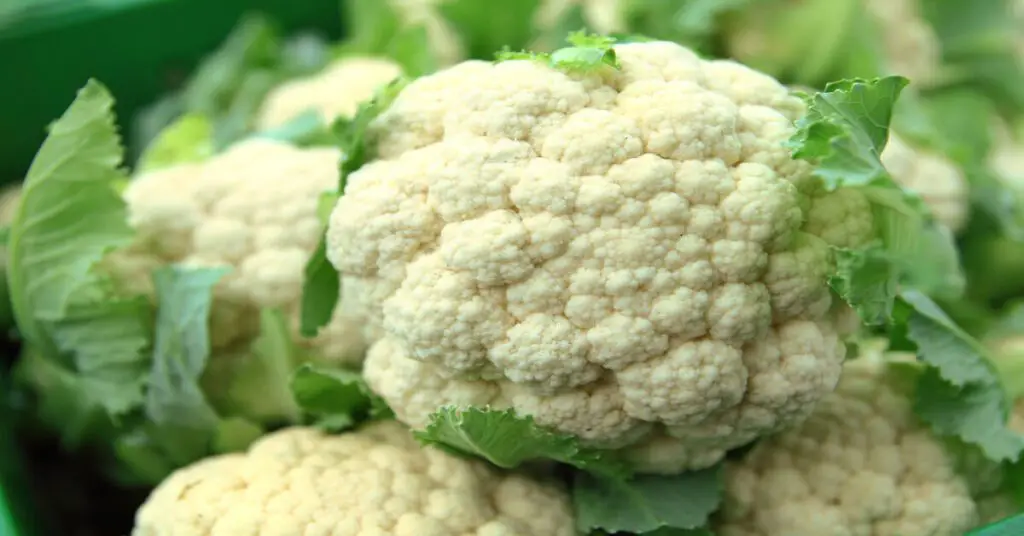Is Cauliflower man-made? Many people are shocked to discover that cauliflower(Brassica oleracea var. botrytis) is actually a man-made creation. Human-made, however, does not mean that it’s been modified in a lab.
Rather, the Cauliflower was first domesticated from an ancestral species of wild cabbage (Brassica oleracea). Belonging to the mustard (or cabbage) family (Brassicaceae).
This same wild cabbage is the genetic parent of many other common vegetables today. Such as kale, broccoli, brussel sprouts, collard greens, cabbage, and gai lan. These vegetables, cultivars of the original species, have all been derived via centuries of selective breeding.
Origins and Cultivation
Like the broccoli, the Cauliflower’s exact origins are a bit murky.
What is known for certain is that it originated from an ancient ancestral species of wild cabbage. Which grew along the sea cliffs of the northern Mediterranean for thousands of years.
Exactly when and where the cauliflower originated is still unclear. Most sources indicate Cypress as the origin of the modern cauliflower. [1]
Historical and literary records indicate that a version of cauliflower (perhaps an early initial form) may have been mentioned as far back as the 4th century B.C.E. in Greece or in the Spanish court in the 12th century.
However, widespread cultivation in Europe most likely began in 1490. Where cauliflower seeds were first documented to have been commercially introduced by Genova citizens from Cyprus. [1]
From there, it spread commercially across Europe and the world. Appearing in London markets in 1619, India in 1822, and American supermarkets in the 1920s.
Is Cauliflower related to Broccoli?
Yes, cauliflower is most certainly related to broccoli. Both plants come from the same wild cabbage ancestors.
Several genetic studies on the relationship between cauliflower and broccoli have been conducted over the years.
DNA evidence shows a direct origin from broccoli and an indirect origin from wild Brassica species. With mixing (introgression) with the broccoli gene pool. [1]
Cauliflower Varieties
There are actually hundreds of varieties of cauliflower. Not just the common white-headed ones seen in supermarkets.
They come in all colors, from purple, orange, to lime green. Each have their own unique textures and flavors.
Here are a few popular cauliflower cultivars:
- Alverda – this breed is known for its unique lime green color surrounded by deep-green leaves. Alverdas tend to be more fibrous (less crumbly than the common white variety) and sweeter in taste.
- Cheddar Hybrid – as the name suggests, this hybrid comes in a beautiful yellow color. But with a more mild and sweet flavor; it is popular in Indian cuisine.
- Depurple Hybrid – known for its textures, nutritiousness, buttery sweetness, and nutty lavender colored florets. This hybrid’s distinct purple color comes from anthocyanins. The same antioxidants found in red wine.
- Fioretto or Chinese (Taishun) Cauliflower – a true hybrid of white cauliflower and broccoli. These cauliflowers are known for their long, light-green stems and small yellow flowers. The nutty flavor and crunchiness makes it popular in Chinese cuisines.
- EarliSnow – this cultivar, as the name suggests, is famous for being one of the first to be ready for harvest in the spring.
- Snow Crown – this breed is famous for its fast-growing and robust seedlings. Which can tolerate moderate amounts of frost.
- Early White – a hybrid known for its super large head spanning over 9 inches (23 cm) wide. The flavorful cauliflower also thrives in cool weather in the spring or fall.
- Amazing – this amazing breed is bred for both hot and cold climates. So, it’s perfect for late summer and fall plantings.
- Twister – unlike others, this cultivar is famous for its large twisting leaves, which cover the cauliflower head. Protecting it from sunshine and enhancing the cauliflower florets.
- Symphony – one of the largest cultivars of cauliflowers. This cauliflower’s head can grow up to 1 foot (30 cm) wide. They take longer (~96 days) to mature but are sweet and have great textures due to the lack of hollow stems.
Is Cauliflower a GMO?
No, although there are hundreds of cultivars of cauliflower. They are not considered a genetic modified organism (GMO).
GMOs are defined as an organism whose DNA has been modified in the lab. To express different flavors and genes.
Cauliflower, on the other hand, has not been modified in a lab. But has evolved naturally via human selective breeding over thousands of years from the wild cabbage.
References:
[1] Maggioni, L., von Bothmer, R., Poulsen, G., & Branca, F. (2010, March 31). Origin and Domestication of Cole Crops (Brassica oleracea L.): Linguistic and Literary Considerations. Economic Botany, 64(2), 109–123. https://doi.org/10.1007/s12231-010-9115-2.

